Sigma Xi Distinguished Lecturers, 2001-2002
Each lecturer has designated his or her topic(s) for three different types of audiences. Where more than one level is shown, the lecture can be adjusted to the needs of the audience:
- P (Public)
Aimed at presenting scientific issues of general concern to a public audience. - G (General)
Intended for a normal Sigma Xi audience of both scientists and other scholars representing a broad range of disciplines. - S (Specialized)
Aimed at scientists and students in fields that are closely related to that of the lecturer.
Colin Adams
Department of Mathematics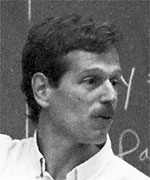
Bronfman Science Center
Williams College
Williamstown, MA 01267
413-597-3300
FAX: 413-597-4061
E-mail: Colin.Adams@williams.edu
Web:http://www.williams.edu/Mathematics/cadams
Why Knot? (P,G)
Mel Slugbate's "Real Estate in Hyperbolic Space" (P,G)
Mel Slugbate's "Bus Tours of the Universe and Beyond" (P,G)
Colin Adams is the Francis Oakley Third Century Professor of Mathematics at Williams College. He received his Ph.D. from the University of Wisconsin at Madison. He is particularly interested in the mathematical theory of knots, their applications and their connections with hyperbolic geometry. He is the author of The Knot Book, an elementary introduction to the mathematical theory of knots, and co-author of How to Ace Calculus: The Streetwise Guide(which has had as high as #62 rating at amazon.com). Dr. Adams is the author of numerous research articles on knot theory and hyperbolic 3-manifolds and receives research grants from the National Science Foundation. He is also known for giving mathematical lectures in the guise of Mel Slugbate, a sleazy real estate agent. A recipient of the Deborah and Franklin Tepper Haimo Distinguished Teaching Award from the Mathematical Association of America (MAA) in 1998, he is also the Polya Lecturer for the MAA for 1998-2000.
Paul Billings
Gene Sage & Company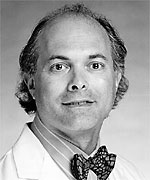
589 Howard Street
3rd Floor
San Francisco CA 94105
415-371-9500
E-mail: pbillings@genesage.com
The Promise and Pitfalls of the Genetics Revolution (P,G,S)
Life in the Age of Genetics (P,G,S)
Biotechnology and Public Policy: Lessons Learned (P,G,S)
Paul Billings received his M.D. and Ph.D. in immunology from Harvard. Dr. Billings completed his clinical training in internal medicine and medical genetics at the University of Washington in Seattle. He is Co-Founder, Executive Vice President and Chief Scientific and Medical Officer of GeneSage, a genetic information, services and products company in San Francisco. He previously was Deputy Network Director and Chief Medical Officer of the Heart of Texas Veterans Health Care System. His interests are the impact of genetic information and biotechnology on society; and molecular biology and immunogenetics, the relationship to cellular differentiation and its application to clinical genetics. In 1995, Dr. Billings became President and Chief Executive Officer of the International Cord Blood Foundation, a non-profit charitable organization dedicated to hematopoietic stem cell research, education and clinical applications. He now serves that organization as Medical Consultant and member of the Board of Directors. Dr. Billings is a Founding Fellow of the American College of Medical Genetics and a Fellow of the American College of Physicians. He has published numerous scholarly articles and book chapters in addition to his book, DNA on Trial: Genetic Identification and Criminal Justice.
Elizabeth M. Brumfiel
Department of Anthropology and Sociology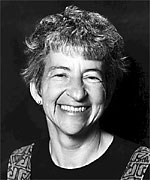
Albion College
Albion, MI 49224
517-629-0432
FAX: 517-629-0509
E-mail: ebrumfiel@albion.edu
Aztec Hearts and Minds: Aztec Ideology in the Archaeological Record (P,G)
Wealth Production and Resource Use at Aztec Xaltocan (P,G)
Gender and the State at Ancient Teotihuacan (P,G)
Elizabeth Brumfiel received her Ph.D. from the University of Michigan. She has carried out archaeological research at numerous Aztec sites in central Mexico. Currently she is the John S. Ludington Trustees' Professor at Albion College and she chairs their anthropology and sociology department. Her work explores the dynamics of gender, class, and factional politics in ancient Mexico and the changes in resource use that accompanied Aztec expansion. Her current research focuses upon the impact of Aztec warfare-centered religion upon rural communities in the Aztec empire. She has received grants from the National Science Foundation, the National Endowment for the Humanities and the H. John Heinz III Charitable Trust. Dr. Brumfiel presented the Distinguished Lecture in Archaeology for the Archaeology Division of the American Anthropological Association in 1991 and the David L. Clarke Memorial Lecture at the University of Cambridge in 1997. A long-time Sigma Xi member, Dr. Brumfiel has edited four books and is the author of numerous journal articles.
Bernard Chasan
Physics Department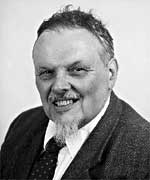
Boston University
590 Commonwealth Avenue
Boston, MA 02215
617-353-2608
FAX: 617-353-9393
E-mail: bc@buphyc.bu.edu
Web: http://buphy.bu.edu/chasan.html
Does God Play Dice? (P,G)
Maxwell's Demon: Still Here After 120 Years (G)
Life and Entropy: An Unlikely Partnership (G)
Bernard Chasan is professor of physics at Boston University. Born in Brooklyn, New York, he received his undergraduate and graduate education at Columbia and Cornell respectively. Professor Chasan's research interests were initially in experimental nuclear and particle physics. He conducted research at the MIT Bates Linear Accelerator, and served as Chair of the Outside Users' Group. In 1978 he spent a sabbatical year in the Biophysics Laboratory of A .K. Solomon at Harvard Medical School, marking a shift in research interests. In recent years his interests are the structure of the important protein actin, and its study via atomic force microscopy and via far infrared spectroscopy at the National Synchrotron Light Source, Brookhaven National Laboratory.
Leonard Evans
Science Serving Society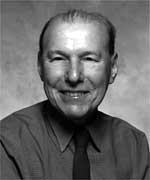
973 Satterlee Road
Bloomfield Hills, MI 48304
248-203-6417 or 248-646-0031
E-mail: LE@ScienceServingSociety.com
Traffic Safety--What Do We Know, How Do We Know It, and What Can We Do? (P,G,S)
Gender and Age Differences in Traffic Safety (P,G,S)
Traffic Safety -- Past, Present, and Future -- in Different Countries (P,G,S)
Leonard Evans is president of Science Serving Society and, prior to that, worked for General Motors. He received his D. Phil. in physics from Oxford University. His research interests are reflected in his book, Traffic Safety and the Driver(reprinted 1996), and some 138 journal publications. He gave the keynote address in Dublin at the 1998 international conference The Older Driver, Health and Mobility. A member of the National Academy of Engineering, Dr. Evans is president of the International Traffic Medicine Association and a past president of Association for the Advancement of Automotive Medicine and has received awards from both organizations for outstanding contributions and achievements in the field. In 1991, he received a special award of appreciation from the National Highway Traffic Safety Administration for outstanding leadership and extraordinary contributions in the field of motor vehicle safety.
Andrea M. Ghez
Department of Physics and Astronomy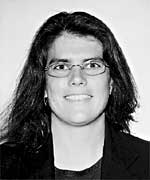
University of California, Los Angeles
Los Angeles, CA 90095-1562
310-206-0420
FAX: 310-206-2096
E-mail: ghez@astro.ucla.edu
Web:http://www.astro.ucla.edu/faculty/ghez.htm
Observing the Fastest Moving Stars in Our Galaxy: Evidence for a Massive Central Black Hole (P,G,S)
Bringing the Galaxy into Focus with the Largest Telescopes in the World (P,G)
The Effects of Young Companion Stars on the Potential for Planetary Formation (G,S)
Andrea M. Ghez received her Ph.D. from the California Institute of Technology and is associate professor of physics and astronomy at the University of California at Los Angeles. She was a Hubble postdoctoral research fellow at the Steward Observatory of the University of Arizona, and a Visiting Research Scholar of the Institute of Astronomy at the University of Cambridge, England. Her other honors and awards include the Amelia Earhart Award, NSF Young Investigator Award, a Sloan Fellowship, a Packard Foundation Fellowship, and the Pierce Prize from the American Astronomical Society. Most recently she received the Maria Goeppert-Mayer Award from the American Physical Society. Currently she is involved in intensive research on black holes at the center of our galaxy and the origin and early life of stars using the Keck Telescope. With the ability to carry out diffraction-limited imaging at Keck, Dr. Ghez has mapped the galactic center with unprecedented angular resolution.
Kathleen M. Giacomini
School of Pharmacy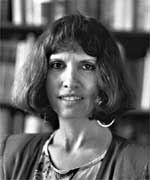
University of California
UCSF Box 0446
San Francisco, CA 94143-0446
415-476-1936
FAX: 415-502-4322
E-mail: kmg@itsa.ucsf.edu
Tailoring Drugs to Fit Your Genes (P)
Pharmacogenetics of Membrane Transporters (G)
Pharmacogenetics (G)
Kathleen Giacomini is chair of the department of biopharmaceutical sciences and professor of biopharmaceutical sciences, pharmaceutical chemistry and cellular and molecular pharmacology at the University of California at San Francisco. She received her Ph.D. in pharmaceutical sciences from the State University of New York at Buffalo. People differ in their response to drugs for many reasons. These differences may be due to genetic differences. Pharmacogenetics is the study of the genetic basis for the differences in drug response among people. The Giacomini laboratory focuses on genetic differences in membrane transporters which play a role in drug response. Particular emphasis is placed on understanding the mechanisms involved in the transport of organic cations and nucleosides and ascertaining the biological relevance of these transport processes to drug disposition. Dr. Giacomini has served on the editorial boards of Clinical Pharmacology and Therapeutics, Pharmaceutical Research and the Journal of Pharmacology and Experimental Therapeutics. She was the 1999 International Pharmaceutical Federation Scientist of the Year.
Jane Gilman
Department of Mathematics and Computer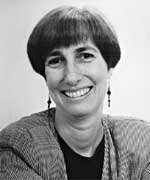 Science
Science
Smith Hall
Rutgers University
Newark, NJ 07102
973-353-5156 ext. 27
FAX: 973-353-5270
E-mail: gilman@andromeda.rutgers.edu
Geometry and the Imagination (P)
Non-Euclidean Geometry and Computers (G)
Algorithms, Discrete Groups and Low-dimensional Topology (S)
Jane Gilman is a professor on the faculty of arts and sciences at Rutgers University, Newark and a past chair of the department of mathematics and computer science. She received her Ph.D. from Columbia University. Her fields of interests include Riemann surfaces, Kleinian groups, TeichmÄller theory, hyperbolic geometry and theory of algorithms and symbolic computation on Kleinian groups. Dr. Gilman has been a visiting professor at Princeton University, the Institute for Advanced Study and the Mathematical Science Research Institute in Berkeley, California. She has published and lectured widely and has held a number of positions in the American Mathematical Society.
Sharon C. Glotzer
Associate Professor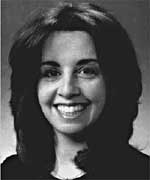
Departments of Chemical Engineering
Materials Science and Engineering
Macromolecular Science and Engineering
University of Michigan
Room 3014, H.H. Dow Building
2300 Hayward
Ann Arbor, MI 48109-2136
734-615-6296
FAX: 734-763-0459
E-mail: sglotzer@umich.edu
Web site:
http://www.engin.umich.edu/dept/
cheme/people/glotzer.html
The Complex Nature of Molecular Motion in Liquids and Gasses: Finding Order in Disorder (G,S)
Computer Simulations of Polymer Materials (G,S)
Computational Materials Science: The Next Frontier (G,S)
Sharon C. Glotzer is associate professor of Chemical Engineering, Materials Science and Engineering, and Macromolecular Science and Engineering at the University of Michigan, Ann Arbor. She is co-founder and former director of the Center for Theoretical and Computational Materials Science at the National Institute of Standards Technology, where she worked for eight years after receiving her Ph.D. in theoretical condensed matter physics from Boston University. Prof. Glotzer works in the area of soft materials and nanoscale systems, for which she develops and applies computational investigative tools. She has published and lectured widely, edited several conference proceedings and organized or co-organized a dozen workshops and scientific meetings. Dr. Glotzer serves on several scientific advisory and editorial boards. Her awards include an NRC Postdoctoral Fellowship, a Presidential Early Career Award for Scientists and Engineers and the 2000 Maria Goeppert-Mayer Award of the American Physical Society.
Wendell T. Hill, III
Institute for Physical Science and Technology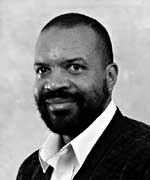
Rm.2117, Inst Phys Sci Tch Bldg
University of Maryland
College Park, MD 20742-2431
301-405-4813
FAX: 301-314-9404
E-mail: wth@ipst.umd.edu
Molecules in Intense Laser Fields: Learning Physics from Chemistry (G,S)
Atoms, Molecules and Light: Physics Serving Society (P)
Wendell T. Hill, III is a professor in the Institute for Physical Science and Technology and director of the laboratory for atomic, molecular and optical sciences and engineering at the University of Maryland. He received his Ph.D. in physics from Stanford University. Dr. Hill studies the interaction of electromagnetic radiation with atoms and molecules. Using focused femtosecond bursts of laser light, he creates environments where the average electric field of the laser is comparable in strength to that of the natural electric field in the hydrogen atom. These intense laser fields provide ways to modify the internal quantum states of a molecule and to alter its decay dynamics (ionization and dissociation). Dr. Hill guides ultra-cold beams of neutral atoms with carefully crafted hollow laser beams, beams with zero intensity along their axes. He is investigating ways to use hollow laser beams to create atom interferometers and gyroscopes. Dr. Hill is a fellow of the American Physical Society, has served on the executive committee of the American Physical Society's Division of Laser Science and its Committee on Minorities and has chaired the Committee on Atomic Molecular and Optical Science for the National Academy of Sciences.
William H. Hooke
American Meteorological Society-Sigma Xi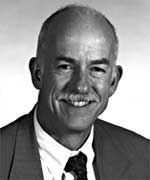 Lecturer
Lecturer
American Meteorological Society
Senior Policy Fellow and Director, Atmospheric Policy Program
1120 G Street, N.W., Suite 800
Washington DC 20005
202-737-9006, ext.420
Fax: 202-737-9050
E-mail: hooke@dc.ametsoc.org
A New Apocalypse: Disasters, Plagues and Turmoil in the 21st Century (P,G)
Disasters: The American Experience (P,G)
America's First Weatherman: Cleveland Abbe Founded an E-business 130 Years Ago and Addicted a Nation to the Daily Forecast (P,G)
Periods unavailable: November 19-23; December 1-January 21
William H. Hooke is a senior policy fellow at the American Meteorological Society (AMS). Prior to joining the AMS in June of 2000, he worked 32 years as a scientist/manager for the National Oceanic and Atmospheric Administration (NOAA). From 1987 to 1993 he was the deputy chief scientist of NOAA, setting policy and research directions in climate, oceanography, weather and marine resources. From 1993-2000, he led interagency programs in weather research and natural disaster reduction, and also served for 18 months as senior scientist for the secretary of commerce. The author of more than 50 publications and co-author of one book, Dr. Hooke is a graduate of Swarthmore College (S.B., Physics Honors, 1964) and the University of Chicago (S.M., 1966; Ph.D., 1967, Geophysical Sciences).
Josef Alfons Käs
Center for Nonlinear Dynamics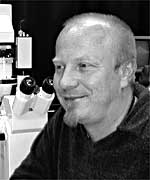
The University of Texas
Speedway and 26th Street
Austin, Texas 78712
512-475-7646
FAX: 512-471-1558
E-mail: kas@chaos.ph.utexas.edu
Novel Methods in Cancer Diagnostics (P,G)
Laser-based Micromanipulation of Biological Materials (G)
The Physics of the Actin Cytoskeleton (S)
Josef Käs is an assistant professor of physics at the Center for Nonlinear Dynamics and the Institute for Cellular and Molecular Biology at the University of Texas at Austin. He received his Ph.D. from the Technische UniversitÉt MÄnchen. His research involves the next big challenge for physics: studies of soft condensed matter physics on the scale of nanometers to tens of microns, i.e., on the scale of proteins and cells, in complex biological matter-often far from equilibrium and frequently behaving in a highly nonlinear manner. "There has been tremendous progress in molecular biology," Käs says. "Nevertheless, many of the questions addressed by molecular biology can only be understood by developing a novel combination of nanosciences and soft condensed matter physics." He says one of the most appealing aspects of this synergetic research in physics, chemistry and biology is that it simultaneously advances fundamental science and provides novel applications in biomedicine and materials sciences.
Jacqueline Krim
Department of Physics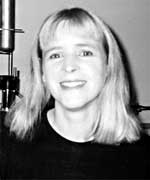
200 Research II, Box 8202
North Carolina State University
Raleigh, NC 27695
919-513-2684
FAX: 919-515-1333
E-mail: jkrim@unity.ncsu.edu
Surface Science and The Atomic-Scale Origins of Friction: What Once was Old is New Again (G)
Vapor-Phase Lubrication of MEMS Devices (S)
Nanoscale Machines: These Squeaky Wheels Will Get No Grease (P)
Jacqueline Krim is a professor of physics at North Carolina State University. She received her Ph.D. in experimental condensed matter physics from the University of Washington, Seattle. Her research interests include solid-film growth processes and topologies at submicron length scales, nanotribology (the study of friction, wear, and lubrication at nanometer length and time scales) and liquid-film wetting phenomena. She is a Fellow of both the American Physical Society and the American Vacuum Society. Dr. Krim serves on the editorial boards for Tribology Transactions and Tribology Letters and on the advisory editorial board for Surface Science. She has published and lectured widely. Among her articles is "Friction at the Atomic Scale," which was the cover story for the October 1996 issue of Scientific American.
Bruce Latimer
Department of Physical Anthropology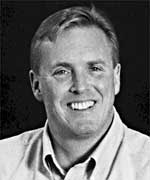
Cleveland Museum of Natural History
Wade Oval, University Circle
Cleveland, OH 44106-1767
216-231-4600, ext. 242
FAX: 216-231-5919
E-mail: blatimer@cmnh.org
Web: http://www.cmnh.org
Unavailable: December
A Small Step or a Giant Leap: The Origins of Bipedality (P,G,S)
The Perils of Being Bipedal (P,G,S)
Another Link in the Chain (P,G,S)
Bruce Latimer is Director for Science, and Curator and Head of the Department of Physical Anthropology at the Cleveland Museum of Natural History. He also serves as the Director of the Biological Program in the Department of Anatomy at the Case Western Reserve University School of Medicine. He received his Ph.D. from Kent State University in biomedical sciences. His research focuses on various aspects of human evolution, especially the evolutionary development of bipedal locomotion. His interests also include exploring the relationships between modern clinical orthopedic conditions and human musculoskeletal adaptations. Most of his fieldwork takes place in Ethiopia where recent fossil discoveries have resulted in the naming of two new species of human ancestors. He also worked in Tanzania on the 3.5 million-year-old Laetoli hominid footprint trails. Dr. Latimer is a consultant for Explorer Magazine and the National Geographic Society.
Octave Levenspiel
Chemical Engineering Department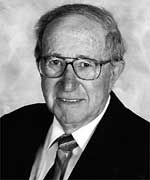
Oregon State University
Gleeson 103
Corvallis, OR 97331-2702
541-753-9248
FAX: 541-737-4600
E-mail: octave@che.orst.edu
Making Friends with Chemical Reactors (S)
Anomalies in Science (G)
A Chemical Engineer Visits Dinosaurland (G)
Octave Levenspiel is emeritus professor of chemical engineering at Oregon State University, with primary interests in the design of chemical reactors. He received his Ph.D. at Oregon State. His pioneer book, Chemical Reaction Engineering, was the first in the field and has gone through numerous foreign editions, having been translated into 11 languages. His other books are The Chemical Reactor Omnibook, Fluidization Engineering (with a co-author),Engineering Flow and Heat Exchange and Understanding Engineering Thermo. A member of the National Academy of Engineering, Dr. Levenspiel has received major awards from scientific societies, but what pleases him most is being called the "Dr. Seuss" of chemical engineering.
Linda Manzanilla
Institute of Anthropological Research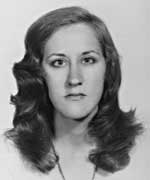
National Autonomous University of Mexico
Mexico City, Mexico
(52)-56-22-9535
FAX: (52)-56-22-9651
E-mail: lmanza@servidor.unam.mx
Interdisciplinary Methodology for Activity Area Research n Domestic Contexts(S)
Teotihuacan, Central Mexico: Multiethnic Cities and Urban Development (P)
Corporate Groups and Rulership at Teotihuacan (G)
Linda Manzanilla is a researcher with the Institute of Anthropological Research of the National Autonomous University of Mexico and professor of archaeology at the National School of Anthropology and History. She received her Ph.D. at the University of Paris. Dr. Manzanilla is the author and editor of 12 books and 80 articles and chapters on subjects related to the emergence and change of early urban societies in Mesoamerica, Mesopotamia, Egypt, and the Andean Region. One of her areas of focus is the domestic life of the inhabitants of the first urban developments of archaic states. She has excavated in Mexico, Bolivia, Egypt and Eastern Anatolia. One new technical development related to her projects is the application of chemical techniques in the reconstruction of ancient activities, together with pollen, phytoliths, botanical macrofossils, faunal remains, osteology, ancient DNA and archaeological materials. Dr. Manzanilla has received the Mexican National Academy of Sciences Award, the Alfonso Caso Award and the Presidential Award of the Society for American Archaeology.
Debra L. Martin
School of Natural Science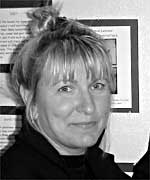
Hampshire College
Amherst, MA 01002
413-559-5576
FAX: 413-559-5448
E-mail: dmartin@hampshire.edu
Violence Against Women in Ancient America (G)
Brain Surgery, Pregnancy Tests and False Teeth: Ancient Inventions in Health Care (P)
The Women Who Came Before Us: Diet, Health and Healing in the Ancient World (P)
Skeletal Plasticity: Reading Bones For Clues To Past Behavior (S)
Debra Martin is professor of biological anthropology, director of the U.S. Southwest and Mexico Program and dean of the School of Natural Science at Hampshire College. She received her Ph.D. from the University of Massachusetts at Amherst in skeletal biology and physical anthropology. Her research interests include health in the ancient world, with a focus on indigenous women and arid environments. She is trained in the areas of skeletal biology, bioarchaeology, paleopathology, paleonutrition and women's biology, with regional specialization covering desert regions of the American Southwest and Northern Mexico, as well as Egypt and Arabia. Her research centers on identification of groups at risk, patterns of mortality of women and children, violence directed against subgroups, political-economic perspectives in the analysis of disease, Native and Southwest Studies and ethnic tourism and its effects on indigenous people. Dr. Martin has published and lectured widely. Among the books she has co-authored or co-edited are Harmony and Discord: Bioarchaeology of the La Plata Valley (in press) and Troubled Times: Evidence for Violence and Warfare in the Past.
Lillian McDermott
Department of Physics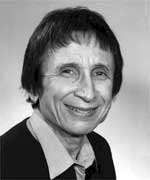
Box 351560
University of Washington
Seattle, WA 98195-1560
206-543-8692
FAX: 206-543-9702
E-mail: lcmcd@phys.washington.edu
Web:http://www.phys.washington.edu/groups/peg
Bridging the Gap Between Teaching and Learning (G, S)
Preparing Teachers to Teach Physics and Physical Science by Inquiry (G, S)
Lillian C. McDermott is Professor of Physics and director of the Physics Education Group at the University of Washington. She received her Ph.D. in physics from Columbia University. She is a Fellow of the American Physical Society and the American Association for the Advancement of Science and is the recipient of both the Millikan Lecture Award (1990) and Oersted Medal (2001) of the American Association of Physics Teachers. For more than two decades, Prof. McDermott has worked to establish research on the learning and teaching of physics as a field for scholarly inquiry by physicists and has written extensively on the subject. Under her leadership, the Physics Education Group conducts a coordinated program of research, curriculum development, and instruction. The materials developed by Professor McDermott and her group are used in undergraduate courses (Tutorials in Introductory Physics) and in the preparation of K-12 teachers (Physics by Inquiry).
Ronald E. Mickens
Box 172 - Physics Department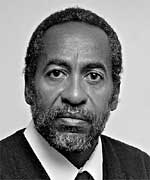
Clark Atlanta University
Atlanta, GA 30314-4391
404-880-6923
E-mail: rohrs@math.gatech.edu orRMICK23756@aol.com
The Level Structure of Matter (G)
Bouchet and Imes: First African American Physicists (P,G)
Models of Periodic Diseases: A "Big Bang" Vaccination Strategy (G, S)
Ronald E. Mickens is the Distinguished Fuller E. Callaway Professor of Physics at Clark Atlanta University. He received his Ph.D. in theoretical physics from Vanderbilt University and has held postdoctoral positions at the Center for Theoretical Physics-MIT, The Joint Institute for Laboratory Astrophysics, and Vanderbilt University. His current research interests include nonlinear oscillations, difference equations, numerical integration of differential equations using nonstandard finite difference schemes, mathematical modeling of periodic diseases, and the history/sociology of African Americans in science. He has published more than 200 research papers, written five books, and edited five volumes. Professor Mickens serves on the editorial boards of several research journals including the Journal of Difference Equations and Applications. His professional memberships include AAAS, the American Mathematical Society, the American Physical Society, the National Society of Black Physicists (for which he is an elected fellow), and the Society for Mathematical Biology.
The Level Structure of Matter (G)
Since is possible because the various phenomena of the physical universe, to a very good approximation, can be compartmentalized. Thus, phenomena in a given compartment can be studied essentially independently of those in other compartments. These compartments are generally conceptual in nature and are associated with particular space and time scales. The main purpose of this lecture is to indicate how the important properties of various levels arise from the four basic interactions: gravity, electromagnetism, weak, and nuclear. Extensive application of elementary dimensional analysis is used to obtain these results.
Bouchet and Imes: First African American Physicists (P,G)
The first African American to receive the Ph.D. in any field was Edward Bouchet in 1876 (Yale University, Physics). This lecture presents the life and career of Bouchet and the world recognized research of Elmer Imes (Ph.D. in Physics, University of Michigan, 1918) on the spectroscopy of diatomic molecules. A general discussion of the African American "presence in science" will also be provided.
A 'Big Bang' Vaccination Strategy (G,S)
In a recent paper, Shulgin et al. [1] constructed a mathematical model to study a "pulse" vaccination strategy for the eradication of measles. They formulate their work within the framework of a continuous SIR epidemic model. They demonstrate theoretically, under various assumptions, that pulse vaccination can lead to eradication of measles epidemics. We examine some of these same issues within the framework of a discrete model based on the work of Anderson and May [2,3].
This research is supported by grants from DOE and the MBRS-SCORE Program at Clark Atlanta University.
References
[1.] Boris Shulgin et al., Bulletin of Mathematical Biology 60 (1998), 1123--1148.
[2.] Roy Anderson and Robert May, New Scientist 96 (1982), 410--415.
[3.] Ronald E. Mickens, Jamie C. Pleasant, and Keithia Simpson, Mathematical Modelling and Scientific Computing 2 (1993), 690--693.
Pedro A. Noguera
Dimon Professor of Communities and Schools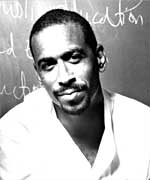
Graduate School of Education
Longfellow Hall
Harvard University
Cambridge, MA 02138-3752
617-496-4406
FAX: 617-496-3095
E-Mail: Pedro_Noguera@Harvard.edu
Bridging the Racial Divide in Academic Achievement (P)
The Role of Research in Improving Urban Public Schools (P)
The Role of Schools in Responding to the Challenge of Diversity within American Society (P)
Available to speak only in Boston, MA area.
Pedro Noguera is a professor of education at Harvard University, where he serves as the Dimon Chair in Community and School Leadership. Previously he was a professor in social and cultural studies at the Graduate School of Education and the director of the Institute for the Study of Social Change at the University of California, Berkeley. His research focuses on the ways in which schools respond to social and economic forces within the urban environment. Dr. Noguera has published and lectured widely on such topics as youth violence, race relations within schools, the potential impact of school choice and vouchers on urban public schools and secondary issues resulting from desegregation in public schools. His articles have appeared in the Harvard Educational Review, Urban Review, Hastings Constitutional Law Journal, International Journal of Race and Ethnic Relations, and the Journal of Social and Economic Studies. Dr. Noguera served four years on the Berkeley School Board and has also served on the Centers for Disease Control Taskforce on Youth Violence.
Thomas J. Overbye
Dept. of Electrical and Computer Engineering
University of Illinois-Urbana-Champaign
1406 W. Green St.
Urbana, IL 61801
217-333-4463
FAX: 217-333-1162
E-mail: overbye@ece.uiuc.edu
Reengineering the Electric Grid (P, G)
Visualization of Electric Power Systems (G, S)
Price Spikes in Electricity Markets: Is Deregulation Really Going to Result in Lower Electricity Prices? (G, S)
Thomas Overbye is associate professor of electrical and computer engineering at the University of Illinois at Urbana-Champaign. He received his Ph.D. from the University of Wisconsin at Madison. Dr. Overbye has published and lectured widely. His article "Reengineering the Electric Grid" appeared in the May-June 2000 issue of American Scientist. From 1983 to 1991, he was employed with Madison Gas and Electric Company, where he helped develop their real-time power system analysis software. In 1993, he was the recipient of the IEEE Power Engineering Society Walter Fee Outstanding Young Engineer Award and this year received the IEEE's Third Millennium Medal, as well as the BP Amoco Award for Innovation in Undergraduate Education.
Willie Pearson, Jr.
Professor and Chair
School of History, Technology and Society
Georgia Institute of Technology
Atlanta, GA 30332
404-385-2265
Fax: 404-894-0535
E-mail: willie_pearson@defiant.iac.gatech.edu
Race, Gender and American Chemistry (G)
Who Will Do Science? (P/G)
Community-based Research Approach to Juvenile Violence (P)
Willie Pearson, Jr., is Chair and Professor, School of History, Technology, and Society at Georgia Institute of Technology. He received his Ph.D. in sociology from Southern Illinois University in Carbondale. His research focuses on human resources in science and science policy. He has authored and edited many publications, including Who Will Do Science? (co-edited with Alan Fechter). Currently, Dr. Pearson chairs the Committee on Science, Engineering and Public Policy for the AAAS;co-chairs, the NIH Minority Training Program Committee for the National Academy of Sciences, and is vice chair of the Committee on Equal Opportunity in Science, National Science Foundation.
Robert T. Pennock
Lyman Briggs School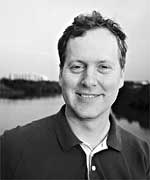
E-30 Holmes Hall
Michigan State University
East Lansing, MI 48825-1107
517-432-7701
FAX: 517-432-2758
E-mail: pennock5@msu.edu
Web: http://www.msu.edu/~pennock5
Evolution and Neocreationism (P,G)
The Virtues of the Scientist (P,G)
Ethical Challenges of Emerging Biotechnology (P,G)
Robert T. Pennock received his Ph.D. in the history and philosophy of science from the University of Pittsburgh. His research focuses on epistemic and ethical values in science. He is the author of Tower of Babel: The Evidence against the New Creationism. He is the recipient of the Templeton Prize for the Exemplary Paper in Theology and the Natural Sciences, and the National Endowment for the Humanities/National Science Foundation fellowship on Scientific, Ethical, and Social Challengers of Contemporary Genetic Technology. He has also received support from the Mellon Foundation and Obirin University (Japan). In 1997, he co-directed an NSF Chautauqua Workshop on the "Ethical Implications of the Human Genome Project." Dr. Pennock has served as President of the University of Texas at Austin chapter of Sigma Xi, and is a member of the American Philosophical Association, Philosophy of Science Association, Sigma Xi, and the American Association for the Advancement of Science.
Mark Ratner
Morrison Professor of Chemistry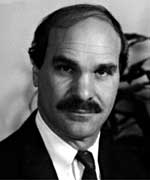
Department of Chemistry
Northwestern University
Evanston, Illinois 60208-3113
Phone: 847-491-5652
FAX: 847-491-7713
E-mail: ratner@chem.northwestern.edu
Periods unavailable: Fall
Molecular Electronics (G)
Wine, Beer, Scotch and Chemistry (P)
Mathematics and Battery Building (S)
Mark Ratner is a professor of chemistry and former department chair at Northwestern University, where he received his Ph.D. He has also served as associate dean of the college of arts and sciences. His research involves the nonlinear optical response properties of molecules; electron transfer and molecular electronics; dynamics of polymer electrolyte transport; self-consistent field models for coupled vibration reaction dynamics; and mean-field models for extended systems, including proteins and molecular assemblies. A fellow of the American Association for the Advancement of Science and the American Physical Society, Dr. Ratner has been listed on the Faculty Teaching Honor Roll at Northwestern eight times and has also received the university's Distinguished Teacher Award. He serves on the editorial boards of Advances in Quantum Chemistry, Journal of Physical Chemistry and Chemical Physics, among others, and is a former chair of the Division of Physical Chemistry for the American Chemical Society.
Henry P. Schwarcz
School of Geography and Geology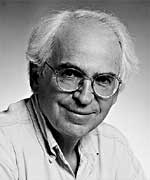
McMaster University
Hamilton, ON, Canada L8S 4M1
905-525-9140, ext. 24186
FAX: 905-522-3141
E-mail: schwarcz@mcmaster.ca
Web:
http://www.science.mcmaster.ca/geo/
faculty/schwarcz.html
How Old Are We? New Methods for Dating Human Evolution (P,G)
You are What You Eat: Decoding the Diets of Ancient Peoples (P, G)
The Clock in the Cave: Stalagmites as Records of the Life and Climate of the Past (G, S)
Henry Schwarcz is University Professor of Geology Emeritus at McMaster University. He received his Ph.D. in Geology from California Institute of Technology. His work has taken him to Africa, Europe, and Israel and he has collaborated with many archaeologists and paleoanthropologists in the study of human origins through the use of uranium-series and electron-spin resonance dating. Dr. Schwarcz has also used stable isotopes of oxygen, carbon and hydrogen as recorders of climate in cave deposits, corals, and fish otoliths. He has measured stable isotopes in bones and teeth as records of diet. He is a Fellow of the Royal Society of Canada, held an Izaak Walton Killam Fellowship of the Social Sciences and Humanities Research Council, and has received the Archaeological Geology Award of the Geological Society of America, and the Roald Fryxell Award of the Society for American Archaeology.
Robin L. B. Selinger
Department of Physics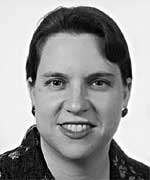
Catholic University
Hannan Hall, Room 200
Washington, DC 20064
202-319-6740
FAX: 202-319-4448
E-mail: selinger@cua.edu
Web:http://www.campus.cua.edu/~selinger/home.htm
How Things Bend and Break: Materials Science at the Molecular Scale (G,S)
Modeling Smectic Liquid Crystals from the Nanoscale to the Macroscale (G,S)
Robin Selinger received her bachelors and Ph.D. degrees in physics at Harvard University. After postdoctoral work at the University of California at Los Angeles, the University of Maryland and NIST, she joined the physics faculty of Catholic University in Washington, DC. Her research involves applications of statistical physics in computational materials science (fracture, plasticity) and in chemical physics (complex fluids) with a strong emphasis on computer simulation. Her work is funded by the Navy and by the National Science Foundation. Her honors include: the National Science Foundation Career Award, National Research Council Postdoctoral fellowship, the Harvard University Physics Department Robbins Prize, and a Zonta International Amelia Earhart fellowship. Dr. Selinger is a member of the American Physical Society and the Materials Research Society.
Mriganka Sur
Sherman Fairchild Professor of Neuroscience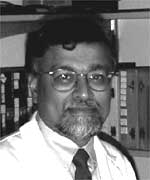
Department of Brain and Cognitive Sciences
Massachusetts Institute of Technology
45 Carleton St, E25-235
Cambridge, MA 02139
617-253-8784
FAX: 617-253-9829
E-mail: msur@ai.mit.edu
Web: http://web.mit.edu/bcs/sur.html
How the Brain Wires Itself (P)
Brain Plasticity (P,G)
Rewiring Cortex: Patterned Activity and the Development of Cortical Networks (G, S)
Mriganka Sur is the Sherman Fairchild Professor of Neuroscience and the chair of the department of brain and cognitive sciences at the Massachusetts Institute of Technology. He received his Ph.D. in neuroscience at Vanderbilt University. His main research interest is the organization, development and plasticity of the cerebral cortex, which he studies with a combination of novel approaches. Dr. Sur is the author of numerous research articles on the wiring of the brain, including the mechanisms by which brain networks are created and altered during development and adulthood. His laboratory is supported by grants from the National Institutes of Health and other research foundations, and he serves on several editorial and scientific advisory boards. He has received numerous awards for research and teaching.
Alan D. Taylor
Department of Mathematics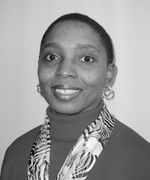
Union College
Schenectady, NY 12308
518-388-6197
FAX: 518-388-6005
E-mail: taylora@union.edu
Fair Division: From Cake-Cutting to Dispute Resolution (G)
The Mathematics of Voting (G)
Three Impossibility Results in the Context of Modeling Fairness (G)
Alan Taylor is the Marie Louise Bailey Professor of Mathematics at Union College and the 1998 winner of its college-wide Stillman Prize for Teaching. He received his Ph.D. from Dartmouth College and, although trained as a logician, has spent much of the last decade dealing with mathematical questions arising from the field of political science. In addition to publishing a number of research articles, he is the author or co-author of four recent books:Mathematics and Politics, Fair Division: From Cake-Cutting to Dispute Resolution (with S. Brams), The Win-Win Solution: Guaranteeing Fair Shares to Everybody (with S. Brams) and, with W. Zwicker, Simple Games.
Pamela R. Willoughby
Department of Anthropology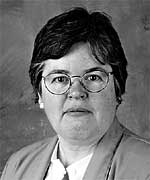
University of Alberta
Edmonton, Alberta, Canada T6G 2H4
780-492-0138
FAX: 780-492-5273
E-mail: pam.willoughby@ualberta.ca
Web: http://www.arts.ualberta.ca./~pwilloug
Mitochondrial Eve and the Middle Stone Age: The African Origin of Modern Humans (P, G, S)
The People Without Culture? The Archaeology of Early Modern Humans in Africa (P, G, S)
The Great Rift Valley: East African Evidence for Our Remote Past (P, G)
Pamela Willoughby is an associate professor of anthropology at the University of Alberta. She received her Ph.D. at the University of California at Los Angeles. Since 1989, she has directed an archaeological project in Southwestern Tanzania dealing with the Middle and Later Stone Age and the origin of anatomically modern humans. Dr. Willoughby has published and lectured widely on these subjects. Her many professional affiliations include the Society for American Archaeology, the American Anthropological Association, and the Society of Africanist Archaeologists, for whom she has been (since 1994) the editor of Nyame Akuma, a bulletin on current research.
Arjun G. Yodh
Department of Physics and Astronomy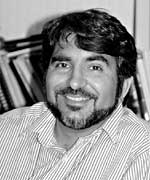
University of Pennsylvania
209 S. 33rd Street
Philadelphia, PA 19104
215-898-6354
FAX: 215-898-2010
E-mail: yodh@dept.physics.upenn.edu
Web:http://dept.physics.upenn.edu/facultyinfo/yodh.html
Spectroscopy and Imaging of Tissues with Diffusing Light (G)
Entropy in Suspension (G)
Arjun Yodh is the James M. Skinner Professor of Science at the University of Pennsylvania. Physics and Astronomy is his home department, and he has a secondary appointment in the Department of Radiation Oncology in the Medical School. He received his Ph.D. from Harvard University and his BSc. from Cornell University. His current interests span fundamental and applied questions in condensed matter physics, medical and biophysics, and the optical sciences. He has devised microscopic methods to measure tiny forces on macromolecules in suspension, and in studies of solution entropy, he has identified novel ways to control the self-assembly of macromolecules. His group has made important contributions to an interdisciplinary field of optical research aiming to understand and use diffuse light to probe highly scattering materials, from complex fluids to human tissues. Lastly, he has pioneered the use of nonlinear optics to probe level structure, charge dynamics, and defects at the interface between crystalline solids. His lab group has several areas of ongoing research including: complex fluids, laser spectroscopy and micromanipulation, biomedical optics, and nonlinear optics. Professor Yodh was a National Science Foundation Presidential Young Investigator (1990-95), an Alfred P. Sloan Research Fellow (1991-94), and an Office of Naval Research Navy Young Investigator (1991-94). He is a Fellow of the Optical Society of America and the American Physical Society, and has most recently held the William Smith Term Professorship of Physics & Astronomy at Penn.
Spectroscopy and Imaging of Tissues with Diffusing Light (G)
Optical methods offer a range of spectroscopies useful for characterization of a wide variety of samples. The optical spectroscopies are rigorous, and work well in simple, homogenous, optically thin samples. Unfortunately many practical materials are not so simple. Human tissues, for example, are highly scattering media. Light penetration in tissues is limited, and generally the effects of tissue absorption and internal motion must be separated from the effects of tissue scattering. Nevertheless, the use of light to investigate the human body interior has grown enormously in recent years, in part as a result in advances in our fundamental understanding about light transport in highly scattering materials, and in part as a result of technological innovations in optics. Arguably the most critical advance in the field has been the recognition and widespread acceptance that light transport over long distances in tissues is well approximated as a diffusive process. Waves of diffuse light energy density propagate deeply in tissues and obey simple rules such as refraction, diffraction, interference, and dispersion as they encounter variations in tissue optical properties. I will discuss these basic phenomena and touch on recent physiological applications of diffuse light imaging and spectroscopy including functional imaging brain, and diffuse optical mammography.
Useful Reference:
Spectroscopy and Imaging with Diffusing Light (Arjun Yodh and Britton Chance), Physics Today, Volume 48, No. 3, 34-40 (1995).
Entropy in Suspension (G)
The addition of small macromolecules to a suspension of large particles causes an entropic attraction to arise between the large particles. The origin of this attractive force is the increase in free volume (i.e. entropy) available to the smaller particles that arises when the large particles are moved close together. We review this simple thermodynamic effect and experimentally explore its manifestations. Light forces (i.e. optical tweezers) are used to measure these interactions, and entropically driven nucleation and assembly of colloidal crystals is discussed and demonstrated.
Popular References to the Research:
Science News "Another Face of Entropy" by Peter Weiss (8/15/98)
The Sciences "Disorderly Conduct" by Hans Christian von Baeyer (May/June 1997).
Science "Gentle Force of Entropy Bridges Disciplines" by David Kestenbaum (3/9/98).